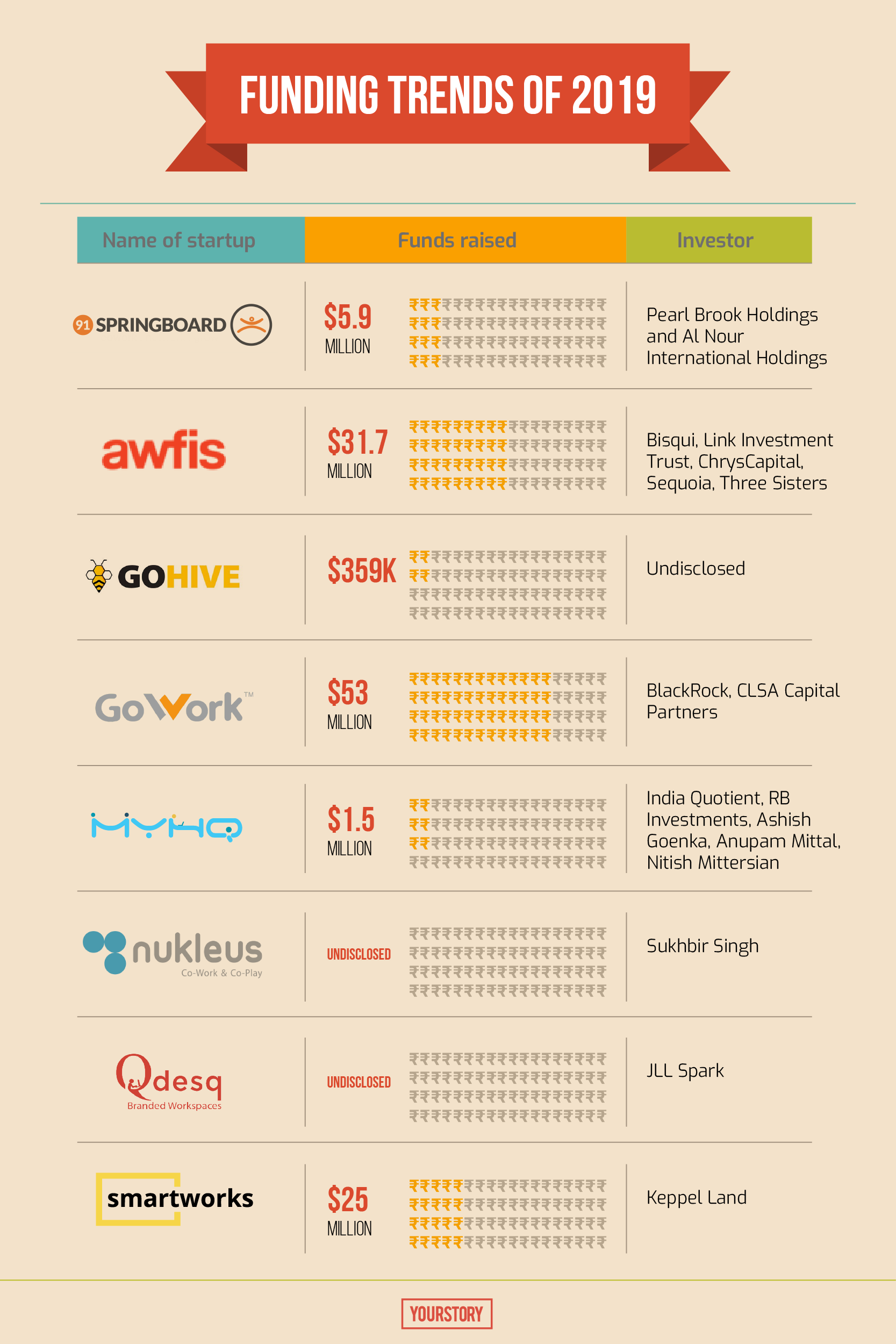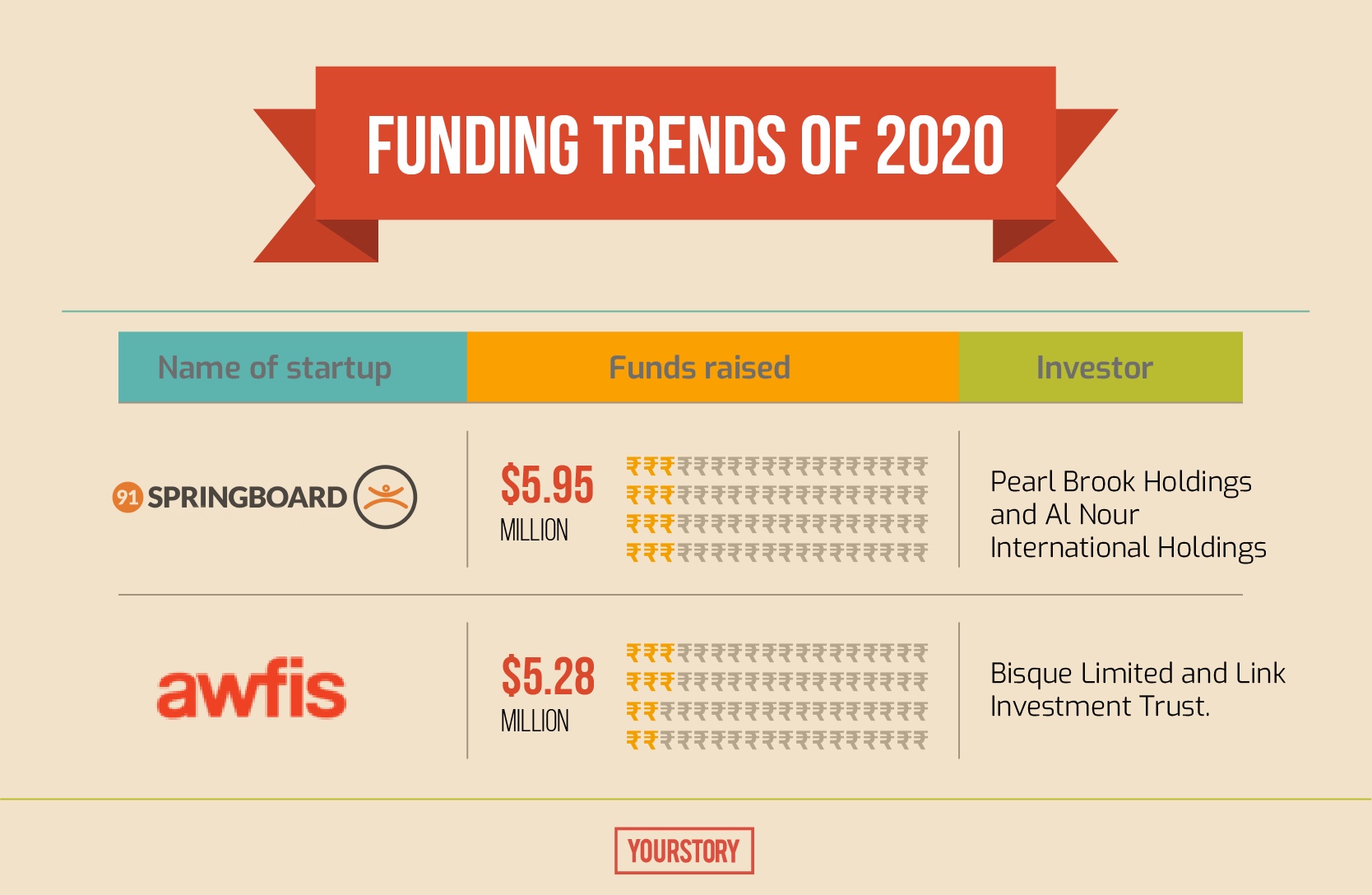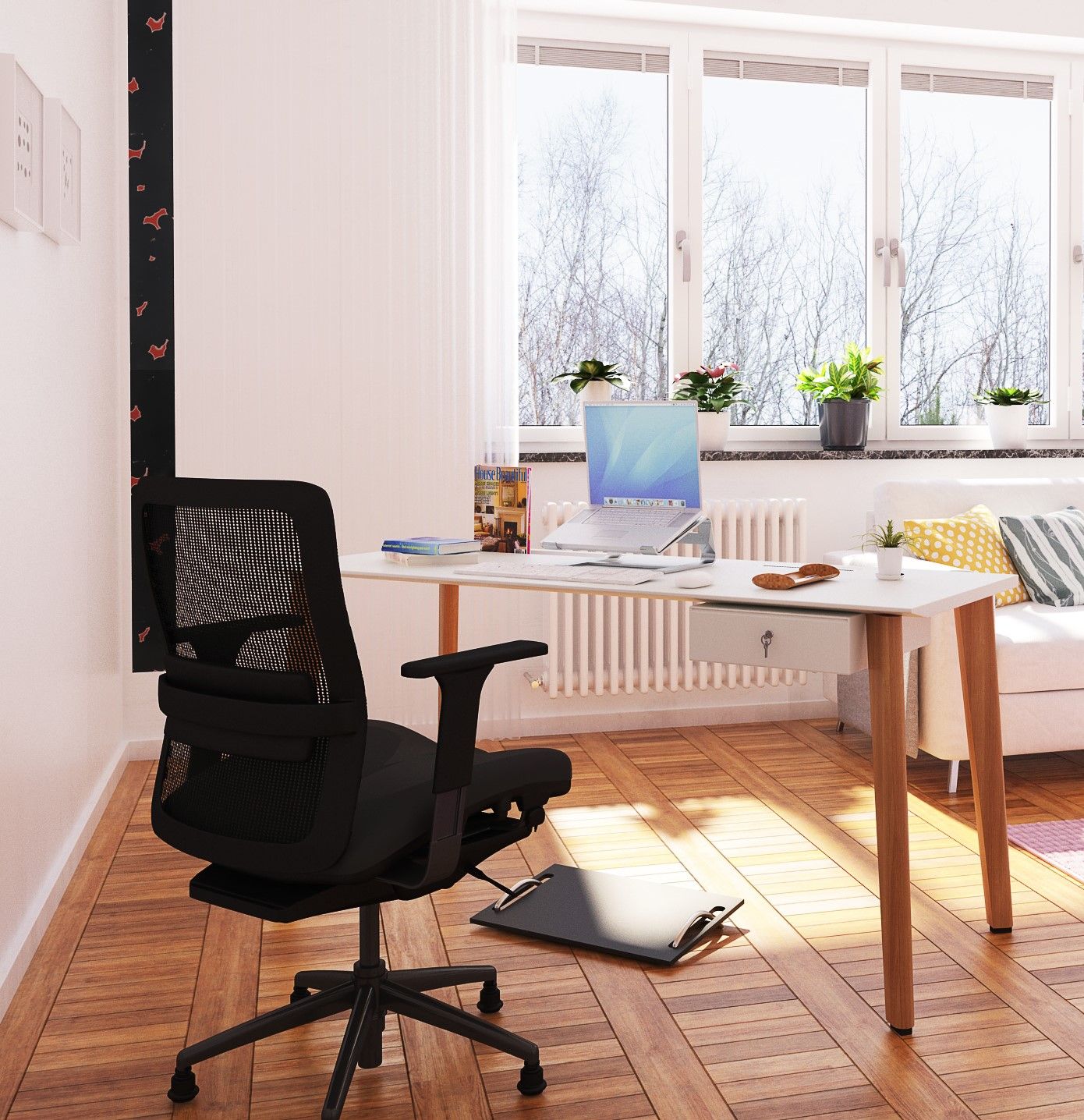Workplaces will never be the same again.
Almost a year after the first COVID-19 case was reported, it is obvious that the pandemic’s impact on the future of work – and workplaces – is here to stay.
Ankur Bansal, Co-founder and Director of venture debt fund BlackSoil, believes the vaccine “is a relief and can take the world back to pre-COVID state. However, the pandemic has brought some irreversible changes”.
![Work from home [Image by Agnesh Jha, MyOperator]](https://images.yourstory.com/cs/2/3fb20ae02dc911e9af58c17e6cc3d915/Image20g4-1609050175027.jpg)
Work from Home(WFH) has liberated people from traditional concepts of associating working from office with higher productivity, building the desired corporate culture, and overall development of any business.
The thought processes of companies and leaders have changed, and the elimination of the commute has added hours to the day and enhanced productivity. Several companies, including tech giants Facebook and Twitter, have already given their staff the option to permanently WFH.
However, there are two sides to every coin.
While WFH has increased productivity for many, it has also led to an imbalance in work-life schedules. In many cases, employees have reported adverse effects on mental health. This has led companies to reimagine traditional cultures to smoothly transition from work from office to work from home, while maintaining a balance.
“Ideas like a hybrid workspace model might gain popularity in the coming months,” Ankur says.

Image Source: Shutterstock
As companies start needing employees to work from office while maintaining social distancing norms, there is likely to be a surge in demand in the coworking space sector.
“This will lead to decrease in utilisation efficiency – a larger area will be required per seat to maintain distancing norms, directly impacting the rental cost per seat. The primary model of coworking spaces will be tested then,” Ankur says.
However, Managing Partner, Orios Venture Partners, Anup Jain has a contrary view. “Demand for coworking is sliding as seen in countries like China where the pandemic has had a remarkable recovery,” he says.
YourStory dives deeper to understand what the future holds for coworking startups, in 2021 and beyond.
Market overview
The Great Depression of 2008 led to the rise of coworking spaces. The advantages of coworking spaces were many – cost efficiency, greater flexibility, and networking opportunities. Ever since then, until the implementation of lockdown, the sector saw a dramatic surge in demand.
Until last year, India was home to over 850 coworking startups. Statista reports that coworking spaces were estimated to account for about 10 million square feet in 2020, as compared to 1.5 million square feet in 2017.
According to YourStory Research, in 2019, eight coworking startups raised a total funding of $70.06 million. These were 91springboard, Awfis, GoHive, GoWork India, myHQ, Nukleus (undisclosed), Qdesq, and Smartworks.

Infographic courtesy: Anubhav Anurag
However, with the entire country going into a lockdown, coworking spaces came to a standstill.
As compared to 2019, this year, only two coworking startups, 91springboard and Awfis, raised a total of $11.2 million. In June 2020, coworking startup WeWork India received $100 million in a fresh round of funding from WeWork Global.

Inforgraphic courtesy: Anubhav Anurag
Pivoting to persist
Coworking startups had to innovate and pivot their business models to survive what was a ‘zero-sales period’.
New-Delhi based Awfis pivoted its business model to enable smooth transition to remote working. The startup introduced two new models - Powered by Awfis and Awfis@Home. B2B product Powered by Awfis helps companies optimise costs by creating coworking spaces out of its underutilised real estate.
Awfis@Home on the other hand, replicates the office environment at home by providing services such as physical infrastructure, IT infrastructure and tech integration.
“The workplace of the future is set to disrupt the commercial real estate segment, which will provide an experience that is safe and smart,” Founder and CEO Amit Ramani says.
The pandemic and its subsequent restrictions provided coworking companies with greater insight into what the future of work may look like.

Illustration courtesy: YS Design
Arnav Singh Gusain, Head of Real Estate and Product at WeWork India, says, “We took the ‘unlock’ phase as a way to re-evaluate existing business strategies by creating more flexible workspace solutions.”
He adds that while there was an initial slowdown, demand spiked as companies started looking at flexible workspaces and agile real estate as the ideal solution to their evolving office requirements.
“Many companies, depending on their nature of businesses, reduced their dependence on the utilisation of office premises and resources, and started considering flexible working schedules based on rostered days of work. It allowed us to support businesses as they reconsider their fixed asset investments and save on overhead costs,” Arnav adds.
Similarly, Gurugram-based CoFynd, which earlier focused on aggregating coworking spaces, has pivoted its business model post the pandemic. “We were selling around 500 seats per month, which came to zero between April to June,” Founder Atul Gupta tells YourStory. It is now focusing on property acquisition, vendor management, sales management, and brand partnerships.
Trends driving the sector
While startups have been major customers of coworking spaces, Ankur feels “even large corporations will see value in a decentralised office setup” now.
Kushal Bhargava, Founder of MyBranch, which helps companies set up sales offices in Tier II and III cities, says:
“The biggest change (post the pandemic) has been the reduction in rental. In metros, the rental cost has come down up to 20 percent and it has gone a little lesser in Tier II cities.”
The Address, a coworking startup founded by Yash Shah, operates 1,000-plus seats in Ahmedabad and Vadodara. The Ahmedabad-based startup faced a major hit during the pandemic. It usually generated bookings worth Rs 50 lakh a month; this went down to Rs 25-30 lakh a month after the pandemic hit.
It offered flexibility to its customers, including two-months of rental-free solutions, and later, reduced rent by 50 percent to attract more clients. The startup now records Rs 60 lakh of sales per month.

Illustration courtesy: YS Design
Arnav says the workplace has now evolved from being purely functional to being more productive, experiential, and meaningful. He further lists trends that the coworking workspaces sector is seeing in India:
- According to a JLL report, higher acceptance of remote working brings a more distributed and diverse workforce, although it brought challenges related to productivity and efficiency.
- While it is difficult to replicate culture via remote working, repurposed or redesigned work areas took over to provide infrastructure for collaboration among split teams of remote and on-site staff.
- WFH saw many employees enjoy greater flexibility and control over their personal and professional lives.
- IT-ITeS and coworking occupiers drove new leasing activity during Q1 2020. The coworking operators accounted for 13 percent of the leasing activity
Looking ahead
At a session on envisioning the future of work during the Bengaluru Tech Summit 2020, P Srikar Reddy, Managing Director and CEO of Sonata Software, said: “There will be a new normal. The future will definitely not be the past.”
It is thus safe to assume that irrespective of the hopes that the vaccine brings, we are not going back to the old normal.
Talking about the ‘new normal’ in the coworking space, Atul says the conventional lease model will cease to exist and will be replaced by a revenue-sharing model. “Enterprises will move from corporate offices to asset line models,” he adds.
Awfis’ Amit emphasises on the importance of introducing technology in real estate. “The modern workplace is gearing itself to be highly tech-enabled with automations and IoT, which will be used to create a contactless and synchronised work environment that is smart and safe,” he says.
Awfis has started seeing 80 percent of its pre-COVID monthly sales since August and is now at par with pre-COVID numbers.
WeWork’s Arnav says there has been a massive shift in the way India works. “We believe flexible workspaces are the future of the industry.” During the lockdown, WeWork saw a 10 percent rise in its enterprise member-base. Presently, enterprise members are now more than 60 percent of WeWork India’s member base.
MyBranch, which caters to clients like Flipkart, PhonePe, Tata Communications and Carrier and Bosch, says until October this year, its business has grown up to 15 percent, year on year. With a self-sustaining model, the startup doesn’t plan to raise funds anytime soon. Kunal says, “Until March 2021, we are planning to enter only those cities our clients want to enter.”
Awfis, which last raised $30 million in its Series D round led by ChrysCapital in August 2019, is now well placed to continue its growth objectives for the next 18 to 24 months. It has committed funds towards building futuristic workspaces and adding two lakh seats over the next 36 months, across 15 cities.
“Funds have been allocated towards capturing a larger share of the CRE market through our B2B offerings that come under our Awfis Enterprise solutions,” Amit says.
Expert opinion
WeWork’s Arnav believes that flexible workspaces will continue to be a priority. However, “as fresh take up of spaces likely to be limited in the coming period, landlords might have to sit on locked-in capital (completed buildings) for a relatively long time period”.
Going ahead, WeWork India will be focusing on Work from Near Home (WFNH) where it plans to provide customers with working spaces that are within walking or biking distance from their homes.
WeWork India plans to offer decentralised offices, a ‘hub-and-spoke’ model that provides employees with satellite offices closer to their homes to avoid long commutes while also providing space to safely collaborate in small groups.
Anup has a similar opinion. The investor says, “Satellite hubs will emerge. Large companies will want turnkey offices in three to four different locations where employees can report for duty. This will open up a market for coworking spaces to become service providers of such offices for three to four companies per location, versus hundreds of companies with an average of three to four employees each at one location. The size of coworking spaces may also get reduced due to this.”

Awfis@Home | Image source: Awfis
WeWork plans to continue focusing on its existing 34 locations across the country. “We will not be aggressively expanding as we want to pivot our energies towards sustainable long-term growth and delivering for the evolving office space needs across businesses.”
Wurkr, a London-based digital platform that recreates physical office spaces virtually, is now working with over 200 clients in India.
CEO Annil Chandel says “There will be a lot of emphasis on virtual reality software and other technologies for an enhanced employee experience...GenZ will prefer a work-from-anywhere model.”
While the pandemic led to overnight reduction in occupancy rates of coworking startups, the long-term impact seems to be “positive results as corporations across the globe turn to workplace solutions between WFH and traditional large offices”, Ankur says.
Edited by Teja Lele Desai
Link : https://yourstory.com/2020/12/outlook-2021-work-from-home-future-of-work-wework-awfis
Author :- Debolina Biswas ( )
December 28, 2020 at 05:15AM
YourStory


